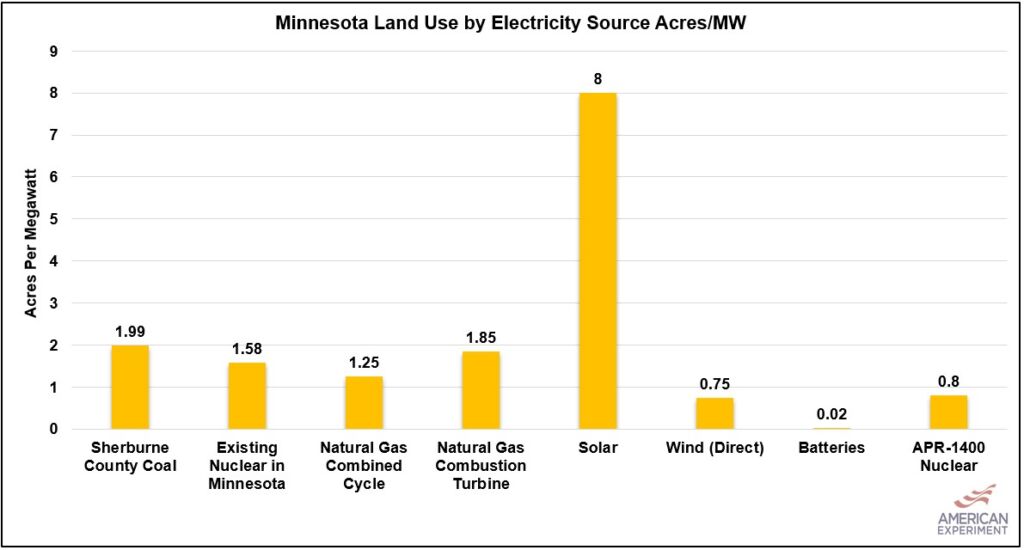PUC ignores Minnesota’s farmland preservation laws in approval of $256 million solar facility
Yesterday, American Experiment detailed how the $256 million solar facility in Dodge County would only provide 0.5 percent of Minnesota’s annual electricity consumption. But the Minnesota Public Utilities Commission’s decision to approve the facility also ignored Minnesota’s farmland preservation laws.
According to the Star Tribune:
State law prohibits building large power plants on sites that include more than a half-acre of prime farmland per megawatt [MW] of electricity generation capacity unless there is “no feasible or prudent alternative.”
Under that law, Byron Solar would be limited to 100 acres of prime farmland. But 69% of the Byron project — 1,080 acres — would sit on prime farmland, PUC documents show. Indeed, about 91% of Dodge County soil is considered prime farmland.
Solar generators do not meet the standard of having 1 megawatt of electricity generating capacity per half acre of prime farmland consumed. In fact, solar facilities are the most land-intensive source of electricity in the state because solar facilities require about 8 acres of land per MW of installed capacity, which you can see in the graph below.

Solar facilities take up four times more space than existing coal plants in Minnesota, five times more space than Minnesota’s existing nuclear plants, and 6.4 times more land than combined cycle natural gas plants. Wind has a low land use number in this graph because it only accounts for the bases of the wind turbines. After all, you can farm around the towers; the same is not true for solar panels.
The numbers get worse when we look at how often solar produces electricity, which was 20.4 percent of the time in Minnesota in 2021. Adjusting for the low capacity factor of solar, Minnesota would need to build nearly five MW of solar to average one MW of solar output throughout the year, which brings the land use figure closer to 40 acres per MW.
It’s no surprise that local residents are concerned that land-hungry solar installations will drive up the cost to rent farmland:
“This project will take … very productive farmland out of our township,” Neil Witzel, Canisteo Township supervisor, told the PUC on Thursday. “There will be a large impact on the [ability] of people to rent land. They will have to transport their tractors and equipment longer distances to farm.”
Our research found that meeting Minnesota’s 100 percent carbon-free electricity mandate would require huge tracts of land. Much of this development will be concentrated on farmland because building on nice flat fields is easier than in hilly or rocky areas. As solar installations proliferate across the state, expect more land-use conflicts.